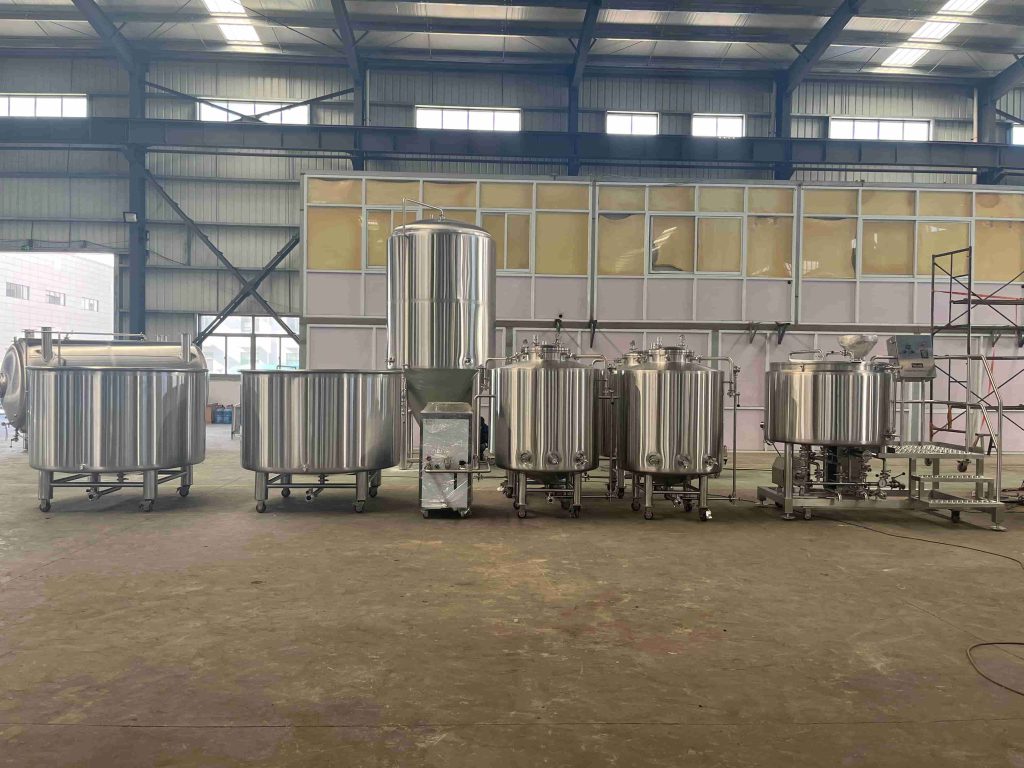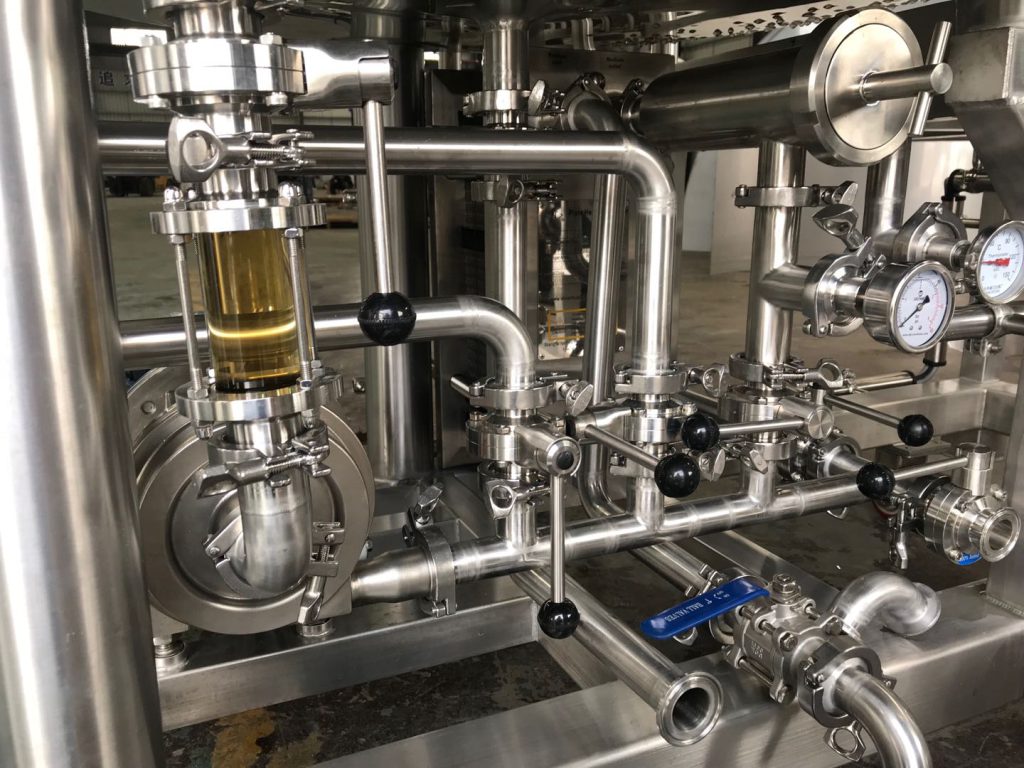Introduction

Kombucha, a fermented tea beverage with a myriad of health benefits, has gained popularity worldwide. Central to the success of brewing kombucha is the fermentation vessel used. With various options available, choosing the right vessel is crucial for the quality and consistency of your brew. In this guide, we’ll explore different types of kombucha fermentation vessels and factors to consider when selecting the ideal one for your brewing needs.
Types of Kombucha Fermentation Vessels
- Glass JarsGlass jars are a popular choice among homebrewers for kombucha fermentation. They are readily available, inexpensive, and non-reactive, making them ideal for maintaining the purity of the brew. However, they may not be the most efficient option for large-scale production due to their limited capacity.
- Ceramic CrocksCeramic crocks offer excellent breathability, allowing the kombucha culture to thrive. They come in various sizes and designs, providing aesthetic appeal to your brewing process. However, it’s essential to ensure that the glazes used are food-safe and non-toxic to prevent contamination of the brew.
- Stainless Steel ContainersStainless steel containers are durable, easy to clean, and resistant to corrosion. They are suitable for commercial-scale kombucha production due to their large capacity and hygienic properties. However, stainless steel may interfere with the fermentation process by inhibiting microbial growth, resulting in a slower fermentation rate.
- Food-Grade Plastic ContainersFood-grade plastic containers are lightweight, affordable, and available in various sizes. They are suitable for beginners or those on a budget. However, plastic containers may pose risks of leaching harmful chemicals into the brew, especially when exposed to heat or acidic environments.
- Wooden BarrelsWooden barrels add a unique flavor profile to kombucha due to the interaction between the wood and the brew. They are favored by artisanal brewers seeking to impart a distinct taste to their kombucha. However, wooden barrels require meticulous maintenance to prevent contamination and off-flavors.
Factors to Consider
- Size and CapacityConsider the volume of kombucha you intend to brew and choose a vessel that can accommodate your production needs. Ensure sufficient headspace to prevent overflow during fermentation.
- Material and CompositionSelect a fermentation vessel made from non-reactive, food-safe materials to maintain the integrity of the brew. Consider factors such as breathability, durability, and ease of cleaning.
- Fermentation ControlEvaluate the vessel’s ability to regulate temperature and airflow, which are crucial for promoting healthy fermentation. Look for features such as airlocks, temperature control systems, and built-in spigots for easy sampling and bottling.
- Aesthetic AppealWhile functionality is paramount, consider the visual aspect of your fermentation vessel. Choose a design that complements your brewing space and enhances the overall brewing experience.
- Budget and AccessibilityAssess your budget constraints and the availability of fermentation vessels in your area. Strike a balance between cost-effectiveness and quality to make an informed decision.
Comparison Table

Before delving into the intricacies of kombucha fermentation vessels, let’s compare the pros and cons of each option to guide your decision-making process.
| Fermentation Vessel | Pros | Cons |
|---|---|---|
| Glass Jars | – Inexpensive | – Limited capacity |
| – Non-reactive | ||
| Ceramic Crocks | – Excellent breathability | – Risk of toxic glazes |
| – Aesthetic appeal | ||
| Stainless Steel | – Durable | – Inhibits microbial growth |
| Containers | – Easy to clean | |
| Food-Grade Plastic | – Lightweight | – Risk of chemical leaching |
| Containers | – Affordable | |
| Wooden Barrels | – Unique flavor profile | – Requires meticulous maintenance |
| – Artisanal appeal |
Conclusion
Choosing the right kombucha fermentation vessel is essential for achieving optimal results in your brewing endeavors. Whether you opt for the simplicity of glass jars, the charm of ceramic crocks, the reliability of stainless steel containers, the affordability of plastic, or the artisanal allure of wooden barrels, consider your specific brewing needs, budget constraints, and aesthetic preferences. By selecting the appropriate vessel and paying attention to key factors such as size, material, fermentation control, and budget, you can embark on a rewarding journey of brewing delicious kombucha at home or on a commercial scale.
FAQ
Q:Can I reuse my fermentation vessel for other purposes?
A:While it’s possible to repurpose fermentation vessels for other culinary endeavors, it’s essential to thoroughly clean and sanitize them to prevent cross-contamination and off-flavors.
Q:How often should I clean my fermentation vessel?
A:Clean your fermentation vessel thoroughly after each batch to remove any residue or contaminants that may affect subsequent brews. Use hot water, mild detergent, and a non-abrasive brush to scrub the vessel’s interior.
Q:Do I need to sterilize my fermentation vessel before use?
A:Yes, it’s advisable to sterilize your fermentation vessel before each use to eliminate any potential pathogens or undesirable microorganisms that may compromise the quality of your brew. Boiling water or a diluted bleach solution can be effective sterilizing agents.
Q:Can I use multiple fermentation vessels for continuous brewing?
A:Yes, you can utilize multiple fermentation vessels for continuous brewing, allowing you to stagger batches and maintain a steady supply of kombucha. Ensure proper sanitation and monitoring of each vessel to prevent contamination and maintain consistency in flavor and quality.
Q:How do I troubleshoot issues with my fermentation vessel?
A:If you encounter any issues with your fermentation vessel, such as slow fermentation, off-flavors, or contamination, assess factors such as temperature, cleanliness, and airflow. Adjustments may be necessary to optimize conditions for healthy fermentation and achieve desirable results. If problems persist, consider consulting experienced brewers or referring to reliable resources for troubleshooting guidance.

